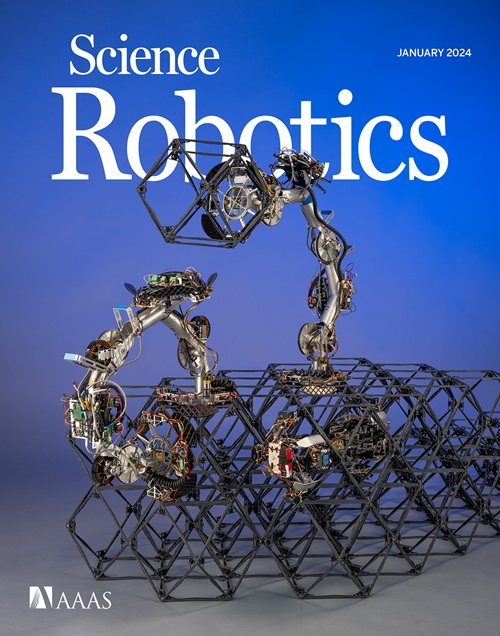通过先进的能量存储实现机器人的动物耐力
IF 27.5
1区 计算机科学
Q1 ROBOTICS
引用次数: 0
摘要
仿生移动机器人的移动效率与动物机器人相当,但由于电池的限制,在系统级能量密度上落后一个数量级以上。这篇评论量化了这种能量差距,评估了硬件优势和当前电池的弱点,并为未来的技术提出了基准框架。以Spot为例,我们确定了与动物体内能量储存相匹配的电池化学物质,并提出了释放机器人耐力的技术。本文章由计算机程序翻译,如有差异,请以英文原文为准。
Achieving animal endurance in robots through advanced energy storage
Bioinspired mobile robots move with comparable efficiency to their animal counterparts but lag by more than an order of magnitude in system-level energy density because of battery limitations. This Review quantifies this energy gap, evaluates hardware strengths and current battery weaknesses, and proposes benchmarking frameworks for future technologies. Using Spot as a case study, we identify the battery chemistries needed to match the energy storage in animals and propose technologies to unleash robotic endurance.
求助全文
通过发布文献求助,成功后即可免费获取论文全文。
去求助
来源期刊

Science Robotics
Mathematics-Control and Optimization
CiteScore
30.60
自引率
2.80%
发文量
83
期刊介绍:
Science Robotics publishes original, peer-reviewed, science- or engineering-based research articles that advance the field of robotics. The journal also features editor-commissioned Reviews. An international team of academic editors holds Science Robotics articles to the same high-quality standard that is the hallmark of the Science family of journals.
Sub-topics include: actuators, advanced materials, artificial Intelligence, autonomous vehicles, bio-inspired design, exoskeletons, fabrication, field robotics, human-robot interaction, humanoids, industrial robotics, kinematics, machine learning, material science, medical technology, motion planning and control, micro- and nano-robotics, multi-robot control, sensors, service robotics, social and ethical issues, soft robotics, and space, planetary and undersea exploration.
 求助内容:
求助内容: 应助结果提醒方式:
应助结果提醒方式:


